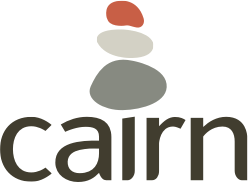By Liz Thorne
I was recently in Austin, Texas for the 6th annual Ready by 21 Annual Meeting. Organized by the Forum for Youth Investment, the meeting focuses on ensuring all youth are ready and prepared to meet life’s demands. It brought together folks in youth development, program quality, education, government and community based organizations all focused on ensuring youth are ready.
A major focus of the meeting was on promoting equity through the lens of readiness as a right. It’s not enough to help young people beat the odds but we need to work with the adults and leaders in communities to change the odds.
Research tells us that just one supportive adult relationship can help buffer young people against risk and help them overcome challenging life circumstances. But let’s zoom out and talk about supportive communities, or as Dr. Shawn Ginwright describes, radical healing.
In his keynote, Dr. Ginwright compared the idea of radical healing to experiments conducted on plants. Researchers would place one plant in a chamber of poisonous gas to test the plant’s response. As you might expect, the plant shriveled and died. But, when the researchers placed multiple, or a community, of plants they didn’t die. Rather, they cleaned the air of the poisonous gas. Together the community of plants garnered their collective strength to change their circumstances.
How can we harness the collective strength of communities to change the odds for youth? During Dr. Ginwright’s address on radical healing, there were three thoughts going through my head as this relates to our work in adolescent and school health:
- We have to take care of the adults in schools. Youth are often placed at the center of our work. Resources, opportunities, and training must be made available to provide physical, emotional and professional support to the adults that show up every day. Particularly, educators and professionals working in economically disadvantaged schools or communities, and those who have faced generations of trauma and marginalization.
- We need more opportunities for Participatory Action Research or experiential learning opportunities. PAR is one way for young people to reach into their community, examine the context and begin to understand and garner their strength as an agent of change.
- There is room in ESSA for a focus on readiness, but we need advocates in the states. ESSA provides an opening, but we will need to focus on state-level efforts to address social, emotional and physical needs of students and staff in schools. (Check out our ESSA State Plan Page for more information).
data-animation-override>
“Power without love is reckless and abusive, and love without power is sentimental and anemic. Power at its best is love implementing the demands of justice, and justice at its best is power correcting everything that stands against love.”
Whether you call it a supportive relationship, radical healing or trauma-informed education, to me it all boils down to one thing. More love in education. Showing, not just telling our young people, that they are valued. Demonstrating they are valued by equipping them with the skills to harness their power and change their environment for the better. Dr. Enwright ended his keynote with a quote from Dr. King that I think sums up the relationship between love and power.

Leave a Reply